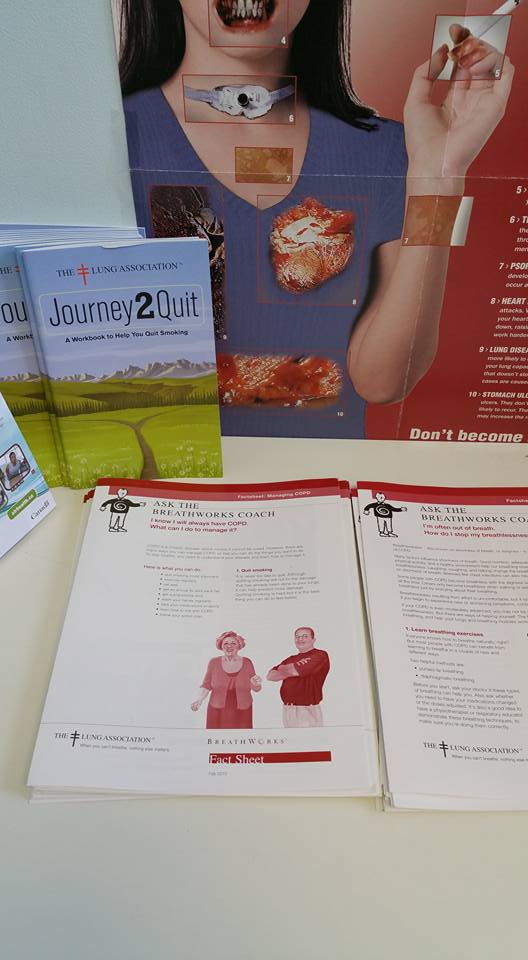
As it is the case for us Repertory Therapist, as is the case for a large portion of professions, Continuing Education (CE) is required and mandatory. Regulatory bodies, such as our The Canadian Society of Respiratory Therapists (CSRT), use CE to have us certified and registered members, be equipped with the latest skills and know-hows of our field and update us with on new and / or reformed practice guidelines.
In my three years of being a RT, I have already taken part in various CE programs, and so I believe it is time for some humble reflection on this matter.
I truly believe in the intention and goal of such CE structures. It is constructive. However, it does hold some specific limitations. My main concern about the CE system is that it takes a one size-fits-all approach. Take for instance, an RRT with a focus in neonatal ICU can register for an online courses which will help review the knowledge side but would lack the ‘hands on’ evaluations, as well the in-person teaching or feedback (i.e. proficiency) which I find to be essential for our stream of healthcare profession. During my time at The Michener Institute, as I am sure it has / was the case in your educational institution, one quickly realizes that while the theory becomes palpable when it is later combined with the practical, hands-on training, and the feedback from teachers to better adjust to strengths and weaknesses that each and every RT student confronts.
Another limitation of the current system is lack of universal standard. This passive approach has allowed some courses, e-module and conference materials to be out of date, and lack sufficient and quality material.
Furthermore the cost-benefit of online versus in-person training has to also be taken into consideration. The online courses and modules to be more cost and time efficient, not to mention conveniently accessible, but it lacks the interprofessional opportunity and technical aspects that is incorporated in the in-person workshops and conferences. However, despite this definitive bright side to the in-person training, one cannot ignore its time and financial burden. One needs to pay higher fees for conferences/workshops than online courses, coupled with the burden of having to request time off work which means wage loss. As I had to maintain a part-time job along with my full-time RT job, for most of my career in this profession, I really appreciated the flexibility of online courses, as it allowed me to maintain a better work-life balance. However I really value the direct and immediate feedback and interaction with the instructions during the workshops and conferences. Recent research stresses the importance of associations taking into account the preferences of its members for CE courses (i.e., online versus in-person). Researchers have studied medical CE courses and have suggested a transition to Professional Development portfolio that encourages clinicians to identify goals and to take relevant courses in selected pathways.[1] An example of such portfolio approach can be found with the existing structure of The College of Respiratory Therapists of Ontario (CRTO).
There are numerous frameworks, theoretical approaches to Continuing Education and Professional Development Portfolios which are either implemented or being considered and which deserve comparison and further analysis. If you are interested to learn more about this topic I recommend looking at Continuing Education in the Health Professions, by Gail Warden and colleagues, published in 2010 through The National Academies Press. You can access this document online by clicking on the following link: https://www.nap.edu/catalog/12704/redesigning-continuing-education-in-the-health-professions .
As you may know, there has been some recent changes to CRTO’s Professional Development and QA process. I strongly recommend that you check out their website for additional information.
| In Ontario and for CRTO:
“The CRTO does not require any number of annual CE credits. As an RT in Ontario, the CRTO QA Program requires you to maintain your PORTfolio on an ongoing basis, and complete any other assessment when requested. More information on the CRTO QA Program can be found on the CRTO website under QA Practice. Changes are currently being made to the existing QA program, so please stay tuned. ”
|
| For Alberta and College and Association of Respiratory Therapists of Alberta:
” Please refer to the continuing competency package in the secure members section of www.carta.ca ”
|
| For Saskatchewan College of Respiratory Therapists:
“Visit www.SCRT.ca -> Resources -> SCRT Continuing Education Program |
| For Manitoba Association of Registered Respiratory Therapists Inc. :
” http://marrt.org/site/cc?nav=04 –> click on the provided link on the page for the PDF file. ”
|
| For l’Ordre professionnel des inhalothérapeutes du Québec :
” You can find all the information with the following links :
|
| Visit the general website for the following organizing bodies: New Brunswick Association of Respiratory Therapists Inc. , Newfoundland and Labrador College of Respiratory Therapy , Nova Scotia College of Respiratory Therapists , and New Brunswick Association of Respiratory Therapists Inc. .
|
Special thanks to the following individuals for their help with this post:
Bryan Buell (CARTA),
Ardis K Monarchi (SCRT),
Carole Hamp (CRTO),
Lee Hurton (MARRT),
Catherine Larocque (OPIQ), and
Katherine Nollet (CSRT).
By Farzad Refahi HBsc RRT CRE
Edited by Farhad Refahi HBA, MA Public Policy
Dec 09, 2016
’Respiratory Therapy By Farzad’
FarzadRefahi.com
Resources and suggested reading:
- Continuing Education in the Health Professions. Warden, Gail et al. 2010. The National Academies Press. https://www.nap.edu/catalog/12704/redesigning-continuing-education-in-the-health-professionshttps://www.nap.edu/read/12704/chapter/2#13


